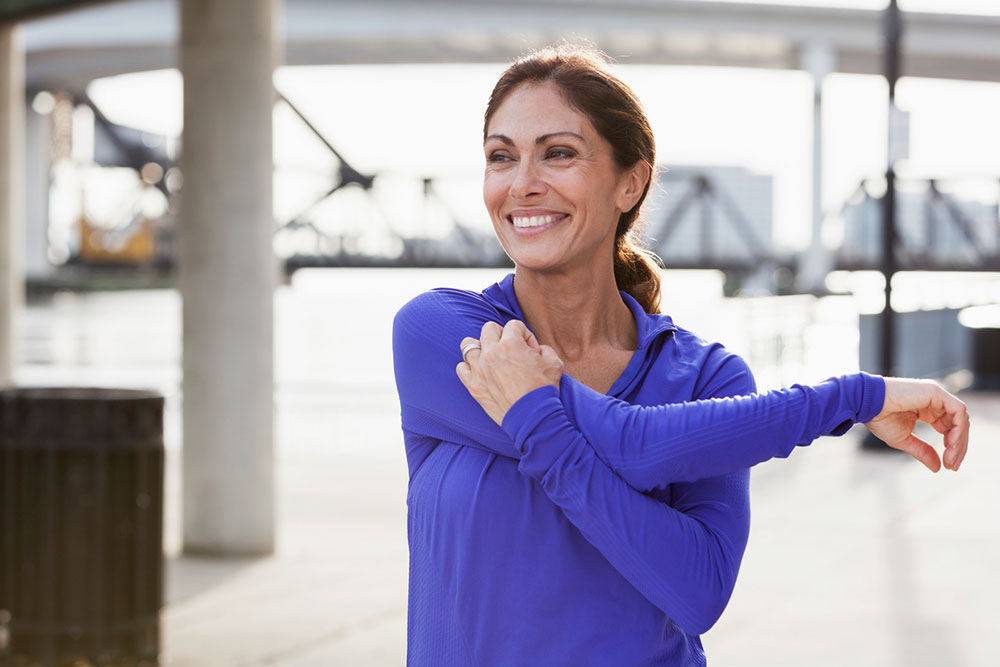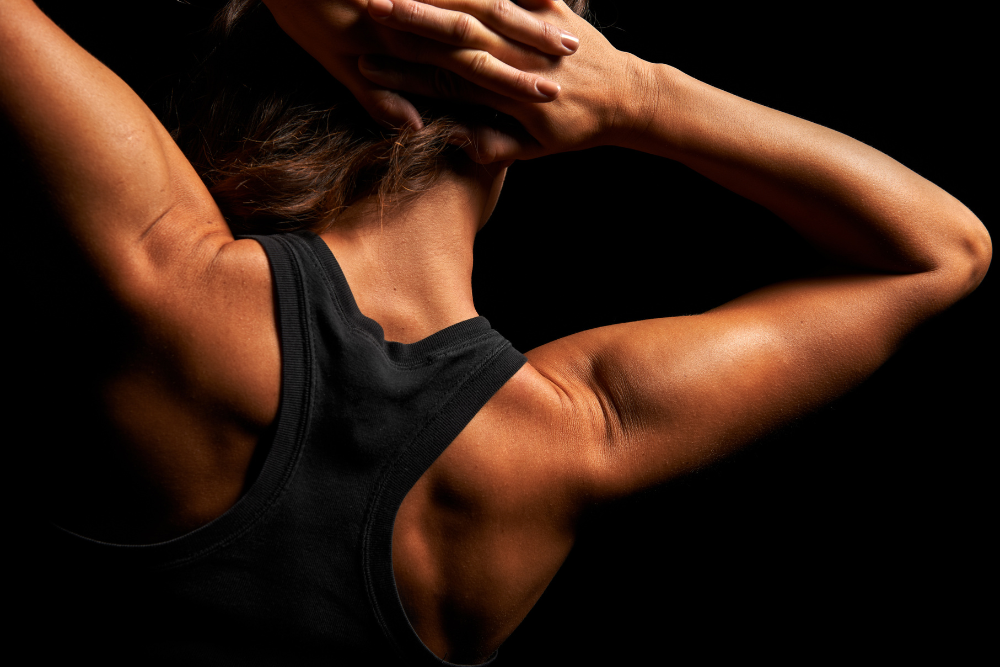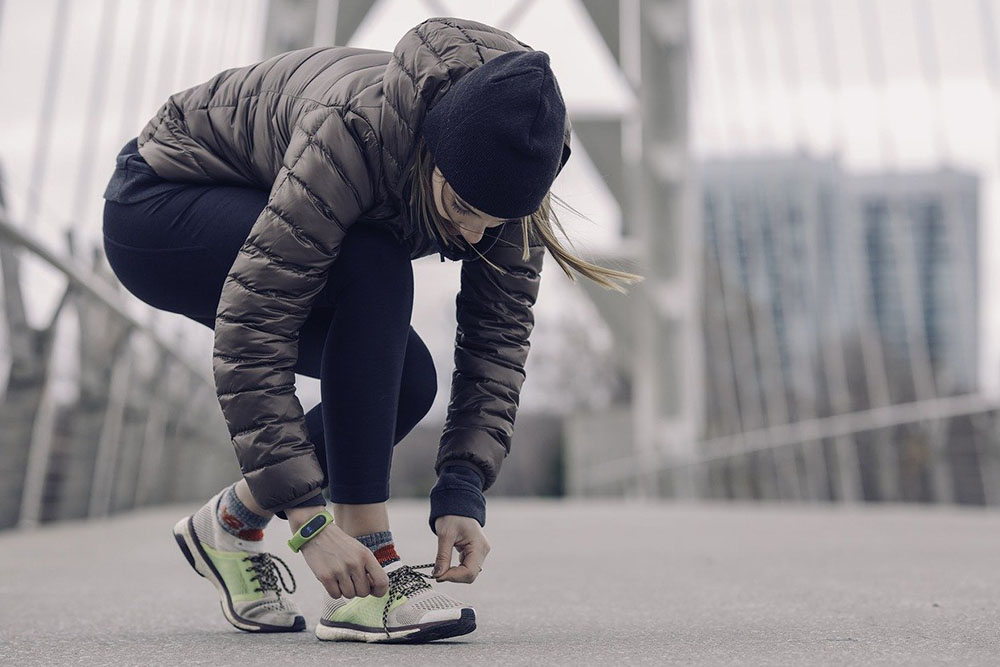Can Exercise Help Your Skin Health?

Julia Basso – PhD
It’s no secret that exercise is good for the soul. Lifelong exercise is associated with everything from reductions in frailty, to the regulation of skeletal mass and function, to successful aging (Elliott, et al. 2017). As we age, our bodies change. Physically active people and elite athletes often age more successfully than others, with successful aging being defined as “the optimization of life expectancy while minimizing physical and mental deterioration and disability” (Elliott, et al. 2017).
Staying active keeps your body young and at optimal health. Two related studies out of Birmingham (Pollock et al. 2018 and Duggal et al. 2018) compared a group of older people who had exercised all their lives to a group of similarly aged adults and young adults who did not exercise regularly. Their findings offer valuable insight into the importance of lifelong exercise on essential aspects of a healthy body ranging from muscle strength to the immune system to avoiding male menopause.
We know that exercise provides a host of benefits to our bodies by improving the function of our heart and lungs as well as improving our muscle strength. But what if there was an ‘anti-aging’ effect that exercise could have on our DNA? Scientists have discovered structures protecting the end of our genetic material called ‘Telomeres’ that may hold the key to cellular aging. These components of DNA protect the ends genetic material by making sure that different components of DNA do not unravel and become stuck to each other. Telomeres shorten as our cells divide as a normal process of aging. This process is associated with increased cancer risk, and higher mortality. The good news is that numerous researchers have demonstrated that physical activity reduces the shortening of telomere length as we age!
Related Article: 3 Ways Lifelong Exercise Prevents Aging
The skin care market is booming. Certainly, one of the first and last things many of us do as part of our day is apply skin cream. As a result of these daily rituals, Americans spent 121 billion dollars in 2016 on skin health care products. We all want healthy, youthful looking skin.
 The skin is one of the body’s largest and heaviest organs, weighing between 7.5 and 22 pounds. As you can see from this diagram of the skin, it is quite a complex organ. Our skin protects us from our environment, serving as a barrier to germs and other harmful substances. We also sense our environment through the skin. The skin is composed of many different types of receptors that respond to stimuli such as touch, temperature, pressure, or vibration.
The skin is one of the body’s largest and heaviest organs, weighing between 7.5 and 22 pounds. As you can see from this diagram of the skin, it is quite a complex organ. Our skin protects us from our environment, serving as a barrier to germs and other harmful substances. We also sense our environment through the skin. The skin is composed of many different types of receptors that respond to stimuli such as touch, temperature, pressure, or vibration.
As we age, the skin goes through many different changes:
-
First, it becomes rougher.
-
The skin also loosens and begins to sag, which is due to the loss of elastic tissue.
-
It becomes more transparent because the epidermis (or the surface layer of the skin) starts to thin.
-
The skin then becomes more fragile because the distinct layers of skin (e.g., the epidermis and dermis) begin to flatten or come together.
-
The skin is more easily bruised because of thinning of the blood vasculature.
-
In some cases, the skin may develop lesions, like benign tumors. Collectively, these changes result in some unfortunate signatures of aging such as wrinkles, “crow’s feet”, “worry lines”, and “frown lines”.
Like so many of our other organs, the skin is responsive to our lifestyle choices. Not surprisingly, bad choices for skin health include stress, a poor diet, smoking, extreme sun exposure, and contact with pollution. Good things for the skin include a healthy diet, limiting exposure to the sun and other environmental pollutants, and as always, exercise!
 Dr. Ellen Marmur, author of Simple Skin Beauty: Every Woman’s Guide to a Lifetime of Healthy, Gorgeous Skin and associate clinical Professor at Mount Sinai School of Medicine says that, “We can think of [exercise] as a cleansing of your skin from the inside.”
Dr. Ellen Marmur, author of Simple Skin Beauty: Every Woman’s Guide to a Lifetime of Healthy, Gorgeous Skin and associate clinical Professor at Mount Sinai School of Medicine says that, “We can think of [exercise] as a cleansing of your skin from the inside.”
Two main mechanisms are at play when we look at the relationship between exercise and skin health.
First
The vascular response to exercise (Simmons et al., 2011; Tew et al., 2012). At the start of exercise, we have an initial vasoconstriction of blood flow to the skin. As exercise continues and our body temperature rises, vasodilation occurs, which means that our blood vessels dilate or become wider. This increases the flow of blood to the skin.
Over the long term, this causes beneficial adaptations to the vasculature that supports the skin. First, vasodilation and increased blood flow occurs at lower body temperatures. That is, exercise becomes more effective at increasing blood flow. Second, with long-term exercise training, you can increase the peak amount of blood flow that travels to the skin.
Related Article:3 Ways To Minimize Everyday Chemicals
Second
How exercise affects the metabolism of the skin and the health of the mitochondria within skin cells. Mitochondria are a component of cells that create or provide energy for the cell. As we age, the health of mitochondria degrade, thus causing impairments in cellular metabolism. In effect, this is thought to cause the age-related changes in skin health described above.
To study the effects of chronic exercise on the skin, one group of scientists took skin samples from the buttocks (an area with limited sun exposure) of habitually active subjects (≥4 hours of high-intensity aerobic exercise per week) and compared them to sedentary subjects (≤1 hour week of exercise per week) (Crane et al., 2015). Compared to their sedentary counterparts, habitually active subjects had significantly greater numbers of mitochondria that were healthier. Similar effects were seen when a group of sedentary, elderly individuals underwent only 12 weeks of endurance exercise training.
These changes were accompanied by improvement in the physical appearance of the skin and found to be dependent on the release of IL-15 (interleukin 15) after exercise, which is a molecule involved in the immune response and is activated in response to viral pathogens.
Skin Health Takeaway
In conclusion, exercise is good for the skin. In fact, it’s probably the best skin treatment out there. Rather than picking up the latest and greatest face cream, just go exercise!
References:
Crane, J. D., MacNeil, L. G., Lally, J. S., Ford, R. J., Bujak, A. L., Brar, I. K., … & Tarnopolsky, M. A. (2015). Exercise‐stimulated interleukin‐15 is controlled by AMPK and regulates skin metabolism and aging. Aging cell, 14(4), 625-634.
Simmons, G. H., Wong, B. J., Holowatz, L. A., & Kenney, W. L. (2011). Changes in the control of skin blood flow with exercise training: where do cutaneous vascular adaptations fit in?. Experimental physiology, 96(9), 822-828.
Tew, G. A., Saxton, J. M., & Hodges, G. J. (2012). Exercise training and the control of skin blood flow in older adults. The journal of nutrition, health & aging, 16(3), 237-241.
You Might Like:
















